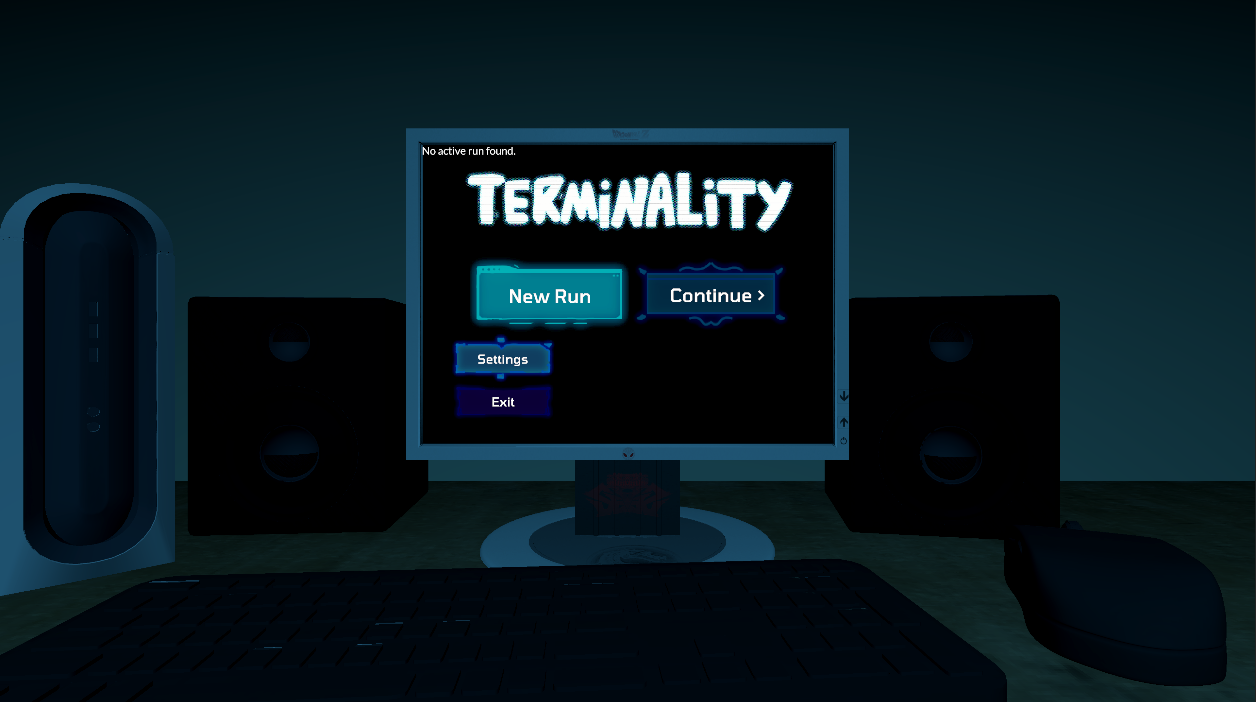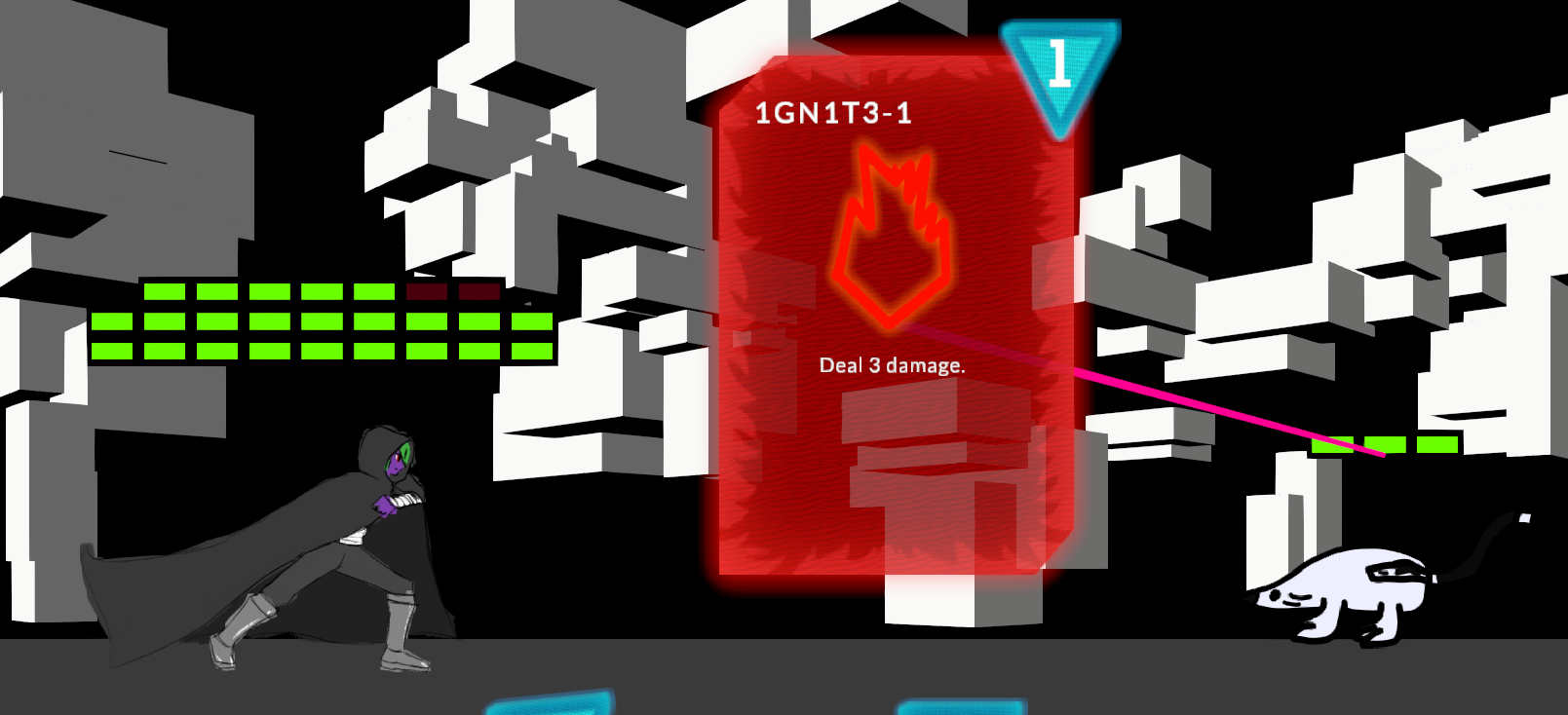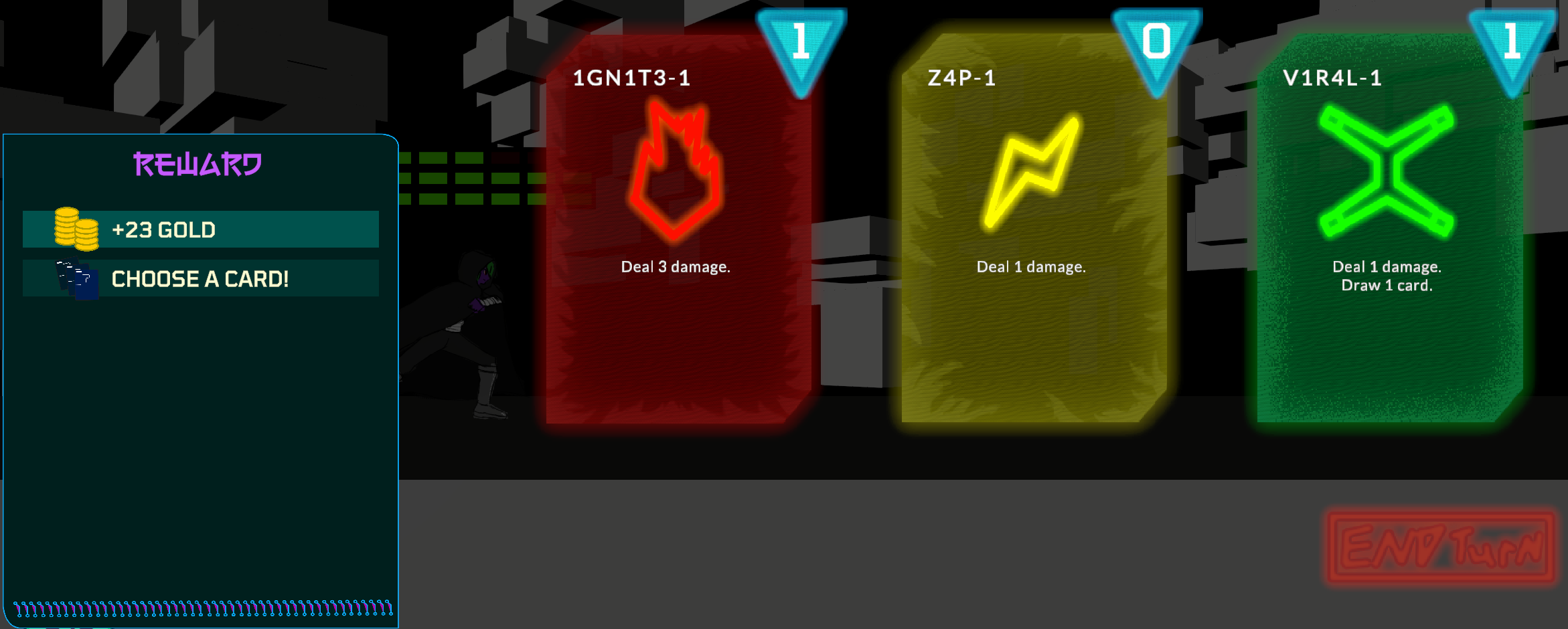TERMINALITY
General Information
Roguelike Deckbuilder Genre
Roguelike deckbuilders are strategy games where each run builds a new deck, and each decision reshapes your fate. Terminality takes this foundation and explores new territory: layered encounter types, symbolic card effects, and reactive audio/visual feedback that evolves with your deck.
Development Information
Team Size: 7
Engine: Unity 6000.0.44f
Platform: PC (Windows)
Development Stage: Vertical Slice complete
Distribution: Steam (page in progress)
Core Features
Combatants
In Terminality, every battle is a symbolic showdown between digital entities called Combatants. Each side — player or enemy — is composed of one or more combatants, each with its own health, energy, and persistent effects. These combatants are positioned in a flexible spatial anchor system that supports both 2D and 3D characters.
Post-Combat Rewards
After each encounter, players are presented with a set of dynamic rewards—usually a choice between new cards or bonus gold. These decisions shape the deck and strategy for the remainder of the run. Every reward screen is designed to be quick, impactful, and readable, ensuring the player feels progression with each victory.
Card Combat
Terminality’s core gameplay centers on tactical card combat, inspired by classics like Slay the Spire and Griftlands. Each turn, the player draws a hand of cards and uses a limited pool of energy to play them. Cards can damage enemies, apply status effects, summon support programs, or manipulate future draws. The system is designed for combo potential and symbolic clarity, with cards triggering vibrant audiovisual effects that reinforce their impact. Every card play is tracked through a modular resolution system, making it easy to expand and balance as we develop the game.
Procedurally Generated Map
The map presents players with a branching path of encounters each run, offering a unique layout every time, forcing players to adapt their route, manage risk, and shape their deck around the sequence of combat, events, and rewards they choose to engage with.
Project Responsibilities
Main Role: Lead Producer
As the sole producer on Terminality, I oversaw the design and implementation of the entire vertical slice—from concept to shipping. My work focused on building production pipelines, architecting core systems, and guiding the team week to week through planning, execution, and iteration.
Secondary Role: Lead Programmer
As Terminality’s lead programmer, I started by prototyping core systems while simultaneously building production momentum as the project’s producer. Balancing both roles kept me deeply engaged in the project day-to-day, and we made rapid progress across three months.
I initially built our gameplay systems one at a time—combat, map flow, encounter handling—then midway through development, I pivoted to refactoring everything into a cohesive, modular architecture tailored to roguelike deckbuilders. Now, we’re working with a clean framework where every card, encounter, and enemy is defined through abstract data structures. This lets us implement new mechanics and narrative events without rewriting core logic.
Terminality is the most complex programming project I’ve tackled to date. It’s pushed me to learn about scalable system design, editor tooling, and how to support a creative team through code.
Created the vertical slice development plan and kept the project on track through a full 3-month sprint cycle.
Ran weekly retrospectives and sprint planning meetings, coordinating task flow across design, art, audio, and engineering.
Developed a fully modular gameplay architecture including combat flow, encounter sequencing, and card resolution systems.
Implemented the core roguelike gameplay loop: transitioning between map, combat, and dialogue encounters using centralized flow orchestration.
Built internal Unity tools for designers to author and test new cards, enemies, and narrative events without needing to touch code.
Led all bug triage and vertical slice polish, implementing features like reward systems, UI navigation, and player feedback tools.
Designed a symbolic combatant system that supports persistent effects, targeting logic, and run-based growth.
Collaborated with artists and writers to bring stylized 2D/3D hybrid visuals and branching dialogue into gameplay systems.
Maintained the entire Unity project repo, wrote custom tooling for scene setup and data management, and optimized compile flow.
Created clear internal docs and visual breakdowns to align teammates on scope, feature priority, and iteration goals.




